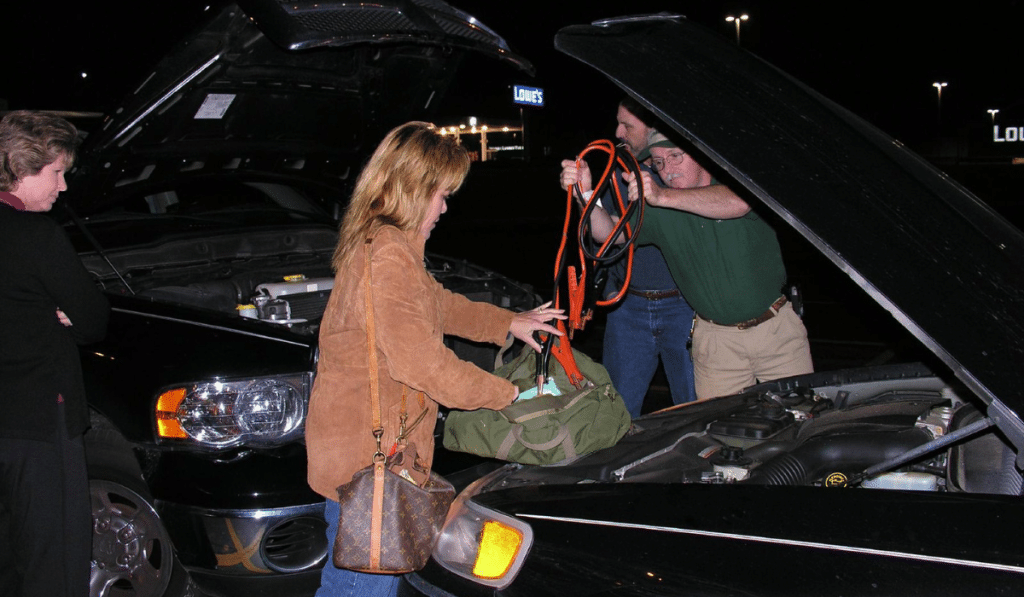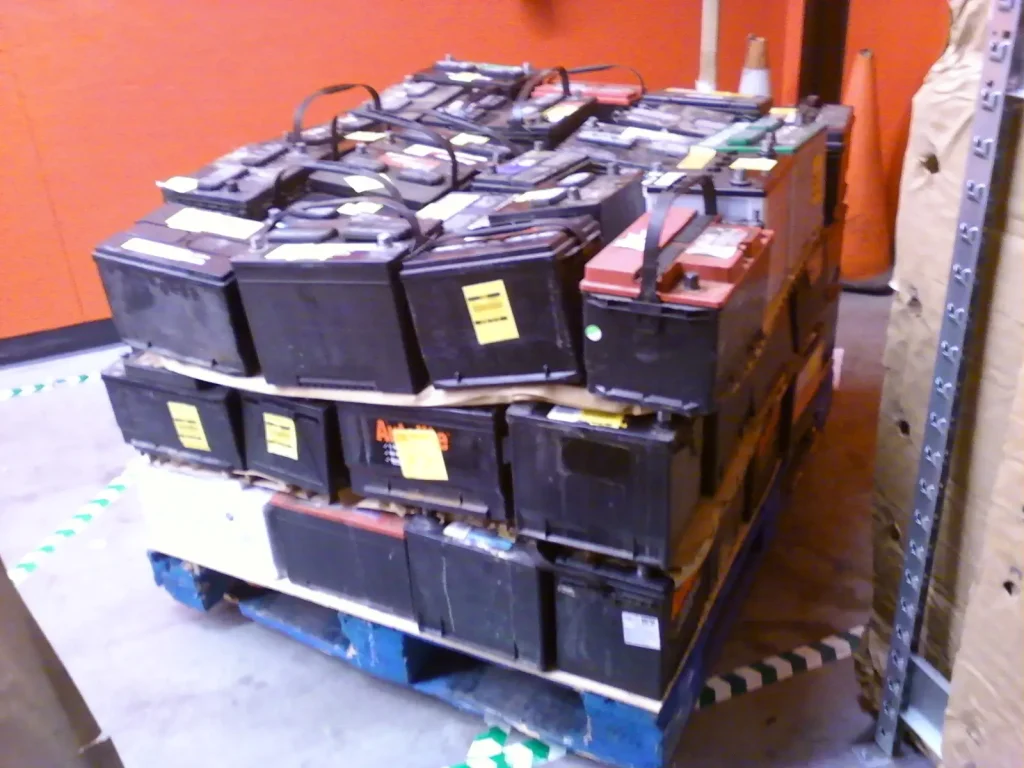Getting stuck with a dead car battery can be frustrating, especially when you’re in a hurry. At the same time, every driver must know how to jump start a car, otherwise he or she may face a problem instead of a simple emergency. No matter how professional a driver or a learner you are, you must master the following small trick.
Here, we will explain it step-by-step so that you may be ready the next time your battery fails you. We can help you get one of the best appliances and tools to collect and join the cables safely. In this article, you will be familiar with how to start a car and be ready again for the next journey in a very safe manner.

What Does It Mean to Jump Start a Car?
Before we go over the steps, let’s discuss jump-starting a car. If your car battery is drained or does not have the charge required to start the engine normally, you might consider borrowing a charge from a nearby car.
This process is called jump-starting. To do it, you will need jumper cables and another car with a functional battery.
Why Might Your Car Need a Jump Start?
Here, we will discuss some of the causes of car batteries draining and, therefore, dying. If you know these things, you can avoid the problem in the future.
1. Leaving the lights on One of those car tricks can leave you stranded when you leave the headlights, interior lights or other electrical parts Switched on when parked at night.
2. Cold weather: Batteries are known to run out of power, especially in very cold climates. There are times when the temperature can go below freezing, and your car battery may falter if this is so where you live.
3. Old battery: Most automobile batteries have a limited capacity and can easily be degraded. If your battery is old, i.e., three to five years or more, it may not hold charges as well as it used to.

4. Faulty charging system: If the alternator or any part of the system is improper, your battery may not charge while you drive.
What You Need to Jump-Start a Car
To jump-start a car, you’ll need a few things:
1. Jumper cables: These are thick insulated wires with metal clips at both ends of the unit. They connect the dead battery to the live battery.
2. A working vehicle: This will require another automobile with a functional battery, which you can use to boost your car.
3. Gloves and safety glasses: These are not strictly required, but it is advisable to wear such gear, for instance, in case there are sparks or battery acid.
Here’s a simple table showing what you need to get started:
| Item | Why It’s Needed |
| Car Jumper cables | To connect the dead battery to the live battery |
| A working vehicle | To provide the power needed to start the dead battery |
| Gloves and safety glasses | For extra safety and protection |
Steps How to Jump Start a Car
Having all these in place, let’s start a car. Make sure to adhere to the following steps to reduce the risks of mishaps or damaging your car.
1. Park the Vehicles Close Together
The first step is to position the car with the strong battery next to the car with the weak battery. Park the two vehicles directly next to each other so that the jumper cables can easily reach both batteries, but the two cars do not make contact.
The best way is to orient them in a direction with their noses facing each other or parallel to each other.
2. Turn Off Both Vehicles
Before you jump the batteries, both vehicles’ engines should be turned off. Switch off the lights and any other electrical gadgets in the car, such as radios, and remove all the keys from the ignition.
3. Locate the Batteries
Get into the hood of both vehicles and identify the battery. Usually, the battery is mounted in the front area of the vehicle engine compartment; however, it seems to be stored in the car boot or under the rear seat in some automobiles.

If you have any questions, the answer to your question can be found in the owner’s manual.
4. Find out the Positive Terminal as well as the Negative Terminal
Car batteries have two terminals: positive (+) and negative (-). The positive terminal has a ‘+’ sign on it and may be covered with red colour, and the negative terminal has a ‘-’ sign on it and may be covered with black colour.
As one would know, it is important to understand which is which because linking the wrong cables can damage a car.
5. Attach the Jumper Cables
Now, it is time to fasten the two pairs of jumper cables. Follow these steps carefully:
- Red to Dead: For the jumper cable connections, connect the jumper cable’s red (positive) clamp to the positive terminal of the dead battery.
- Red to Donor: Connect the other end of the red cable to the positive terminal of the good battery.
- Black to Donor: Next, use the black one, which is the negative jumper cable clamp, to put it on the terminal of the good battery.
- Black to Metal: Last of all, connect the other end of the black cable to an unpainted metallic part of the car with the dead battery.
This might be a bolt on the engine head or on the chassis of the car. It is also very important not to connect this to the negative terminal of the dead battery directly since this results in sparking.
6. Start the Working Vehicle
Switch on the starter with a good battery and let the car run for a few minutes. This will allow the good battery to supply energy to the dead battery.
7. Start the Dead Vehicle
Then, after a few, attempt to crank the car with the dead battery. If it starts, great! Turn it on for a few minutes to charge up more of the battery.
8. Disconnect the Jumper Cables
When the dead car is running, it is time to remove the jumper cables, and the process is complete. Do this in the reverse order that you connected them:
- Black from Metal: Remove the black cable from the section of the car with the unpainted metal part, together with the dead battery.
- Black from Donor: Take the black cable away from the good battery’s good battery’s negative terminal.
- Red from Donor: Take out the red cord from the positive terminal of the healthy battery.
- Red from Dead: Finally, disconnect the red cable from the dead battery’s positive terminal.
Do not allow the clamps to contact each other while any part of the cables is connected to the battery.
9. Aloud Let the Jumped Car Run
It is advisable to engage the engine for at least 15 to 30 minutes. This allows the alternator enough time to charge the battery, or the full cell, as the original terminology was used. During this time, you can take the car for a spin to boost the battery’s charging.
Also Read: What mileage is good for a used car?
What If the Car Doesn’t Start?
At other times, even after going through all of them, the car with the dead battery might still not start. Here’s what you can do:
1. Check the connections: Ensure the jumper cables are properly connected and locked for optimum contact.
2. Wait a bit longer: Then, continue running the good car for a few more minutes before attempting to start the dead car again.
3. Try a different grounding spot: If a person connects the black cable to a metal part and the car does not start, try a different unpainted metal area in the car.
4. Check the battery: This is more evident if the car does not start even after the battery has been fully charged; this may be due to battery old age or battery cell damage. You may have to replace it.
Conclusion
Knowing how to jump-start a car is an essential skill for every driver. It can save you from being stuck and assist you in getting back on the road in the shortest time possible. Jump-starting is quite easy, provided that all the procedures are followed appropriately.
Lastly, one should always ensure that one puts a set of jumper cables in their car in the rare instances when they will be needed. So, if you are ever confused about the steps, it is alright to seek assistance or refer to the car’s instruction manual.
After reading the guide on how to jump start a car, you will be equipped with the knowledge to handle a car with a dead battery without any sort of panic. Safe driving!